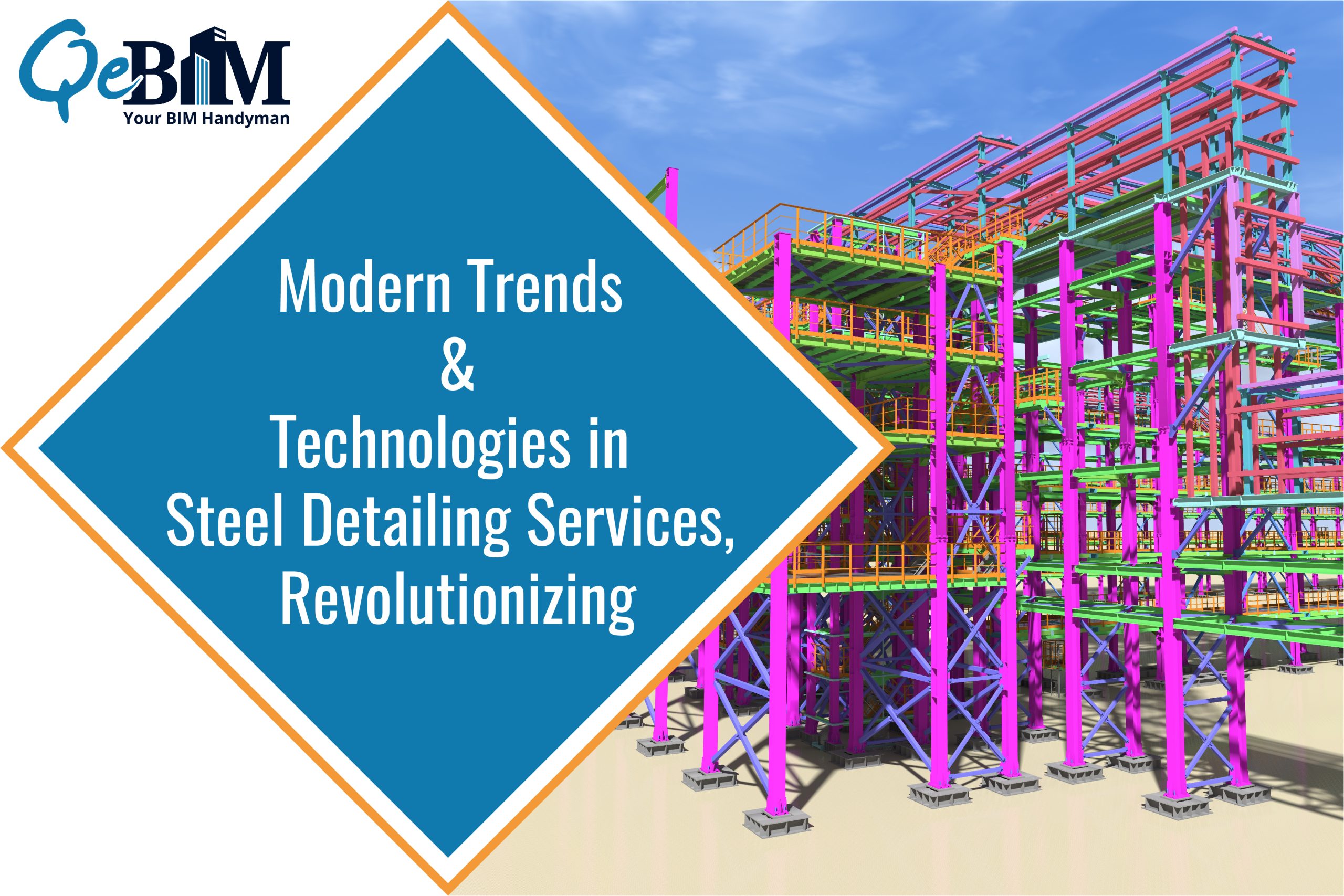Modern Trends and Technologies in Steel Detailing Services, Revolutionizing

Introduction
In order for manufacturers to make steel parts, comprehensive drawings for steel frameworks must be created, which explains why steel detailing services have become crucial within the construction sector. In order to offer comprehensive details regarding steel frameworks like columns, girders, truss structures, and various other elements of steel, steel drawing entails making detailed and precise sketches. Steel fabricators use Steel Shop Drawing Services to produce steel components, and building crews use them to precisely install the components. We are going to discuss the most recent developments within the steel detailing services throughout the following blog post.
Existing Trends in Steel Detailing Services
- Tools for 3D modeling usage
Among the increasingly important developments in steel detailing services has been the use of 3D modeling software. Steel technicians can make precise and comprehensive representations of steel structures using 3D modeling software. The steel detailing business went through an upsurge thanks to such technological advances, which streamlined steel shop drawing assistance in terms of efficiency, accuracy, and pricing. Steel detailers can see the steel framework within 3D thanks to 3D modeling applications, thereby making it simpler for the professionals to spot possible problems and fix them prior to the construction procedure starting. - Mobile phone/ Wireless technology
The deployment of mobile technology has been becoming increasingly prevalent within steel detailing services. Today, steel detailers may examine their plans along with other project-related paperwork on-site using mobile devices like laptops and smartphones. Steel technicians now find it simpler to conduct business online and communicate with their teammates in real time, no matter where they are. - Utilizing cloud computing
A further innovation that has influenced the steel finishing sector has been cloud computing. Steel detailing businesses are able to safeguard and retrieve their information and programs remotely throughout the internet thanks to cloud computing. Steel detailers can now more easily exchange their tasks in real-time, no matter where they are, with their coworkers and customers. - Building Information Modeling (BIM)
A structure or construction can be represented digitally by using the Building Information Modeling (BIM) method. BIM has been embraced by the steel detailing sector and is growing popular in the building sector. Using BIM, steel detailers may generate complex three-dimensional models of steel buildings that engineers, builders, and architects may utilize when making knowledgeable choices regarding the building procedure. - Automated Steel Detailing Software
The implementation of automated steel detailing software has been an additional contemporary trend within steel detailing services. Steel detailing services can swiftly and effectively produce incredibly precise and comprehensive steel drawings thanks to such software applications, which contribute to cutting down on project timelines and expenditures. Differences and mistakes in steel drawings can be minimized by automated steel detailing software, which enhances the precision and durability of steel parts.
Existing Technologie and Software in Steel Detailing Services
- Artificial intelligence (AI) and machine learning (ML) algorithms
The application of artificial intelligence (AI) and machine learning (ML) techniques constitutes one of the newest technologies in Steel Detailing Services. The procedure of steel detailing may be automated by using AI and ML algorithms to perform jobs like error detection and correction, linkage optimization, and predicted behavior for steel components pursuant to different loads. Due to their ability to spot and fix mistakes that human steel detailers might overlook, AI and ML algorithms additionally assist in enhancing the precision and reliability of steel drawings. - AutoCAD
One of the most popular pieces of software within the steel finishing sector has been AutoCAD. Steel detailers can make two-dimensional and three-dimensional models of steel buildings using the computer-aided design (CAD) program AutoCAD. In the context of the building sector, AutoCAD has existed approximately for a while as well as has been extensively employed. - Tekla Buildings
A 3D modeling program made especially for the steel detailing sector is referred to as Tekla Structures. Steel detailers can swiftly and precisely make intricate 3D models of steel structures using Tekla Structures, a robust piece of software. Steel detailers can create excellent steel shop drawings with Tekla Structures that have layouts that are simple to read and comprehend. - Revit
Building information modeling (BIM) software called Revit has been utilized by builders, specialists, and planners to produce digital models of buildings. Because it enables steel detailers in order to produce intricate 3D models of steel buildings that other members of the team are able to employ to arrive at knowledgeable choices concerning the building procedure, Revit continues to rise in popularity within the steel detailing sector. - Augmented Reality (AR) and Virtual Reality (VR)
The incorporation of augmented reality (AR) and virtual reality (VR) technologies remains an additional development that is becoming more and more common in Steel Detailing Services. Steel detailers can now see steel structures in a 3D virtual world thanks to AR and VR technologies, which enhance their spatial perception and ability to see intricate steel frames.
Conclusion
In summation, the steel detailing industry continues to grow, as well as the use of emerging innovations and fashions is enhancing the effectiveness, efficiency, and cost-effectiveness of the procedure of producing steel shop drawings. The steel detailing business is experiencing shifts as a result of the widespread adoption of 3D modeling software, mobile devices, cloud-based computing, as well as building information modeling (BIM). Tekla Structures, Revit, and AutoCAD are a few examples of software programs that are commonly utilized in the steel detailing industry.